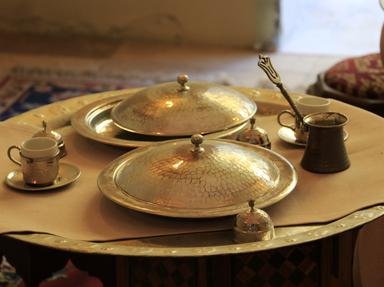Quiz Answer Key and Fun Facts
1. The American Indian is a generalization for a great number of varied peoples inhabiting a great continent with hugely varied habits, skills and diets. Which of the following is NOT accurately descriptive of a type of food provisioning known to specific regional American Indians?
2. While not all early Indian tribes flourished and had plenty to eat, many did. Which statement below best describes what they generally did with a harvest bounty when they had one?
3. There were many ways the American Indian tribes preserved an abundant catch or harvest or hunt. Name the one below they did NOT generally use.
4. One of the keys to survival was to use every part of an animal or other food source when it was available. Which everyday item below was NOT generally made from an animal carcass and used by early American Indians?
5. Some foods made from the meat of animals would be strange to us today. Which food below was made by the Native Americans and not so common today?
6. What food listed below would *NOT* have been made by the early Indians from a buffalo?
7. What crop listed below would not have been raised and eaten by early cultivating Indians of North America?
8. What fish was not part of the diet of any North American Indian we know of?
9. How did many Indians of North America preserve the corn they grew so it could be used for months in the future?
10. What was done, by the early American Indians, with the very best ears of corn from a new harvest?
Source: Author
rwminix
This quiz was reviewed by FunTrivia editor
Bruyere before going online.
Any errors found in FunTrivia content are routinely corrected through our feedback system.

